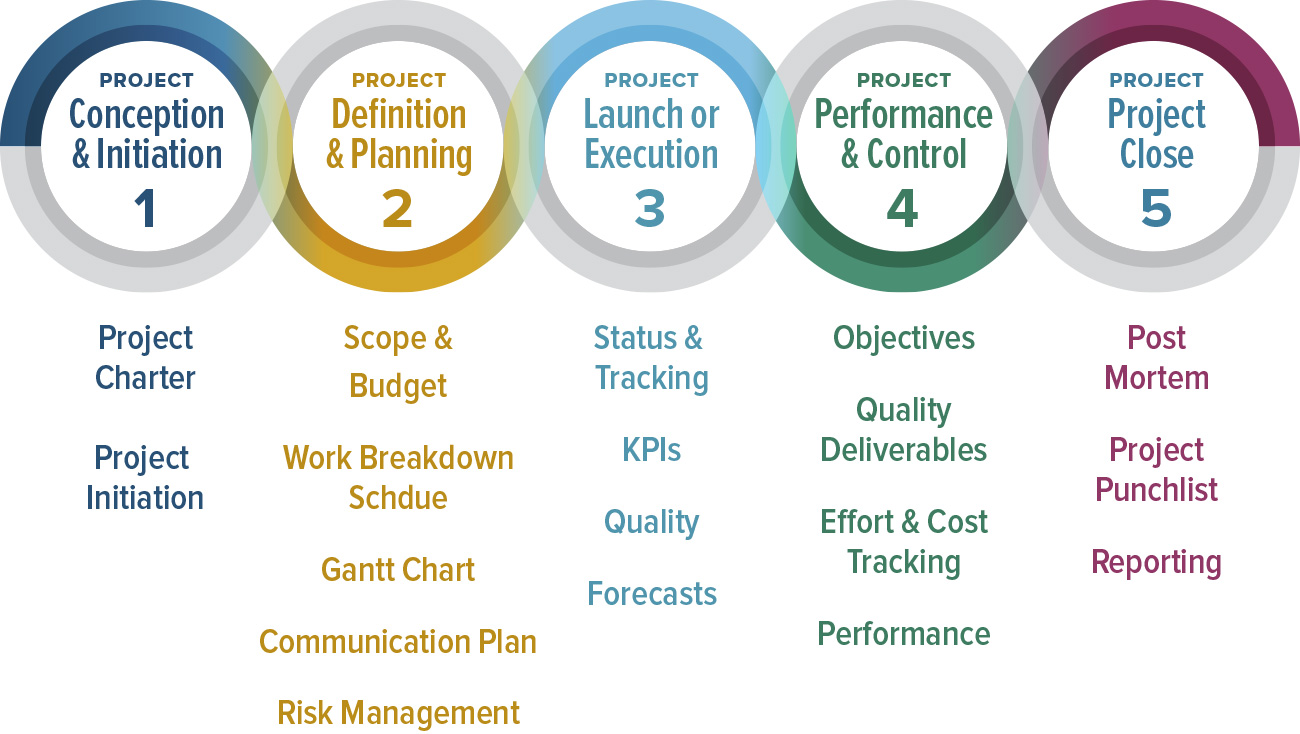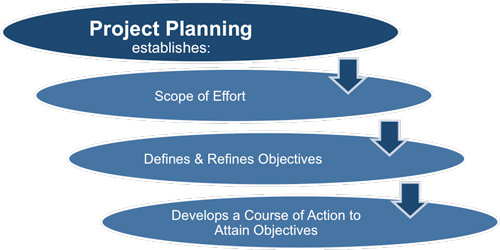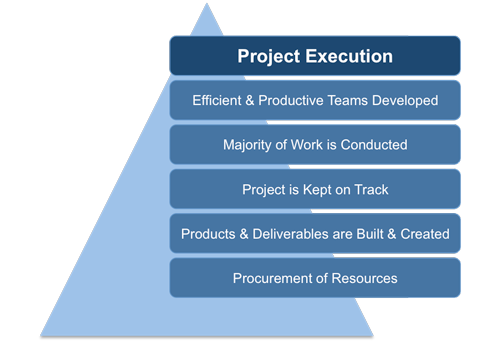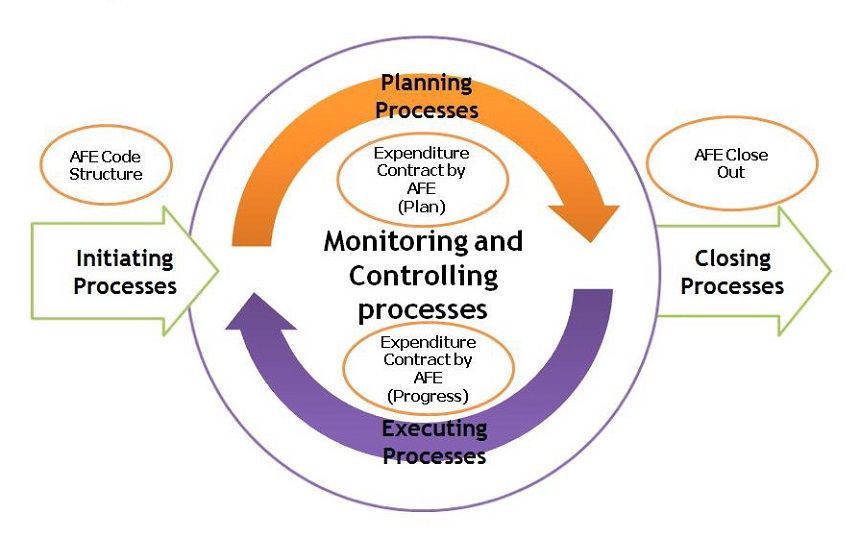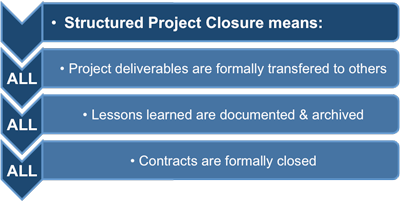A project is a key part of any organization but to manage a project, not an easy job. You got a project…. Good… but what is next?
Now the activity of project management comes in the picture. It is a matter that how to manage the project so that the project starts with a good initiation along with an effective and successful closing. So for this great starting of our project, we have to follow some essential steps but before moving ahead let’s have some basic understanding of project management like what is it? What is the use/need for this? What are the advantages?
So let’s start with what is project management?
Jump to Section
Project Management
A project defined as a planned undertaking of related activities. This plan is made to reach an objective that has a beginning and an end. All projects have a quality which solves any kind of problem. Projects may also be established to determine and define feasible alternative solutions to the problems.
Each project has 7 characteristics, which are as follows:
- Objective
- Schedule
- Complexity
- Size and Nature of Task
- Resources
- Organizational Structure
- Information and Control Systems
Project management is a collection of techniques and tools to accomplish a unique, complex, one-time task objective within a time, cost, resource and quality constraints. It is a way that takes care of all the characteristics of a project. This project management is having 5 essential techniques to manage a project named as Initiation/ definition, Planning, Execution, Controlling and Closing of the project.
Let’s move forward and discuss the techniques or steps of the project management process.
Steps/ Techniques For A Good Project Management
So let’s go ahead and discuss the first step of this process…
Initiating/ Definition
The first step in the process is defining the objectives and goals. It plays an important role to make sure that you understand exactly what the client wants and what are the expectations of the client. This is done through a meeting commonly called the Kick-Off meeting.
This meeting always includes project manager and atleast one developer. Here developer can answer more technical questions than a project manager. It is important to go through all the details of the project. Another key element of this Kick-Off meeting is to identify the possible problems/ issues. Through this identification of the issues, everyone has the awareness of these possible constraints. So there are no surprises for all if a problem actually appears.
This step includes following activities:
- Establishing the project initiation team
- Establishing a relationship with the customer
- Establishment of a project initiation plan
- Establishing management procedures
- Establishing the project management environment and workbook
In this step, you have assigned the roles and responsibilities of your team as well as the client. A client also has responsibilities throughout the project and these need to be established before the work start.
After initiation phase what is the next step… Next step is planning
So come to the Planning phase…
Planning
Once you have decided all the goals and expectations, it’s time to start putting everything into actions. We have many tools to manage our project. Some people like to use project management software and some people prefer simply spreadsheets. Both have their pros and cons but the main idea is to use a method that keeps track of everything and checking things off as they are completed in the best way.
There are two key elements of this planning process, defining all specifications and building a timeline for the project. We use Users Stories for defining specifications, after specification part now the time to build a timeline for the project.
This planning process also includes:
- Describing project scope, alternatives, and feasibility
-
- What problem/opportunity does the project address?
- What results are to be achieved?
- How will success be measured?
- What needs to be done?
- How will we know when we are finished?
- Divide the project into tasks
- Estimating resources and creating a resource plan
- Developing a preliminary schedule.
- Developing a communication plan
- Determining project standards and procedures
- Identifying and assessing risk
- Creating a preliminary budget
- Developing a statement of work
- Setting a baseline project plan
Execution
Now you have got everything planned out. All the task or we can say responsibilities assigned to the people working on the project and they all have tools to move forward. Here project manager makes sure that everyone is doing their jobs and respecting both the timeline and the budget. The project manager works as a mediator between the client and the team.
This process also includes:
- Executing the baseline project plan
- Monitoring project progress against the baseline project plan
- Managing changes to the baseline project plan.
- Maintaining the project workbook
- Communicating the project status
Monitor/ Control
This step is also known as Quality Control or Quality Assurance. It is an essential step in managing any type of project. You need to monitor everything finely corresponding to the defined specifications before presenting in front of the client.
This process includes:
- Hold meetings
- Perform quality control
- Track work progress
- Respond to changes
- Manage issues
So the last but not the least step of this process is closing…
Closing
Now the project completed, the client is happy… your job is done, right?
No, you are wrong… there is a final step that is pretty important named Project closing or post-mortem.
This process also includes:
- Closing down the project
- Conducting post project reviews
- Closing the customer contract
So all the above-listed activities/ techniques enable a project team to do a different task. The list of the tasks are as follows:
The techniques listed above in the Five key phases of project management enable a project team to:
- Link project goals and objectives to stakeholder needs.
- Focus on customer needs.
- Build high-performance project teams.
- Work across functional boundaries.
- Develop work breakdown structures.
- Estimate project costs and schedules.
- Meet time constraints.
- Calculate risks.
- Establish a dependable project control and monitoring system.
Wrapping Up
Project management is a key process for any organization to manage any project in an effective manner or we can say that it is a way to do/ complete a project in a systematic process. This technique takes care of the project from scratch to end. It includes basically project initiation, project planning, project execution, project monitoring and controlling and last but not the least project closing.
The tool used in this technique is PERT and Gantt chart. PERT stands for Project Evaluation Review Technique. It is used in planning and controlling process so this is a planning and controlling tool.
A PERT planning includes:
- Identify the specific activities and milestones
- Determine the proper sequence of activities
- Construct a network diagram
- Estimate the time required for each activity
-
- Optimistic time
- Most likely
- Pessimistic time
We can calculate the expected time for each activity using below formula:
Expected Time = (Optimistic + 4 x Most Likely + Pessimistic) / 6
- Determine the critical path
- ES – Earliest Start time
- EF – Earliest Finish time
- LS – Latest Start time
- LF – Latest Finish time
So this is a brief or you can say an introductory part of Project management techniques. It makes work easier and helps to achieve a set objective in an efficient and an effective manner.
- What Products Should You Sell on Amazon? - November 18, 2020
- 10 Reasons Why You Should Start Selling on Amazon - October 22, 2020
- Comparative Study of Top 6 Web Scraping Tools - September 3, 2020


